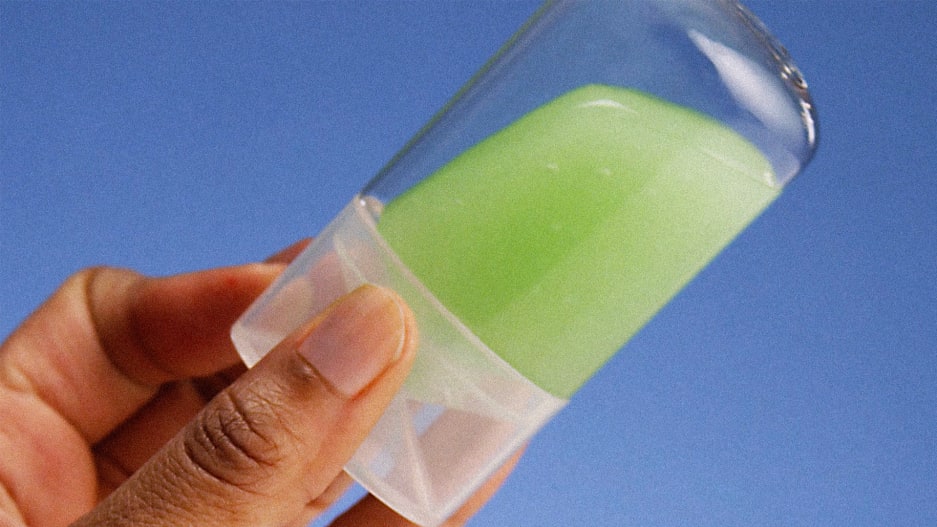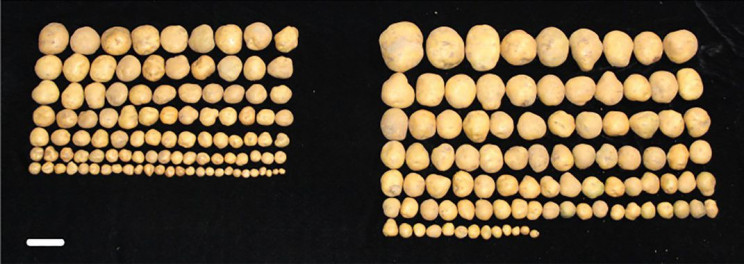Let’s go off-topic and learn about “new” science/technology … and think about how we might see these developments in our diabetes world. What do you think?
The inside of these bottles is so slippery, you can get all the lotion out was written by Adele Peters for FastCompany.com, 25 August 2021. Using a new kind of packaging called EveryDrop means consumers don’t leave anything in the bottle, lessening waste and making recycling easier.
A new line of packaging called EveryDrop is designed to eliminate that waste and make bottles easier to recycle—or even reuse—because they can be easily cleaned out. The extra-slippery bottle, from the MIT spinout company LiquiGlide, ensures that each drop of a product slides out. The technology adds a nontoxic layer of lubricant to the surface to eliminate friction.
 “We all think when we throw a bottle into a recycling bin it will get recycled, but recycling is almost impossible when product is left behind and you need a significant amount of water to clean it,” says Kripa Varanasi, an MIT professor and cofounder of LiquiGlide. “So the reality is that some of this packaging actually ends up in a landfill.”
“We all think when we throw a bottle into a recycling bin it will get recycled, but recycling is almost impossible when product is left behind and you need a significant amount of water to clean it,” says Kripa Varanasi, an MIT professor and cofounder of LiquiGlide. “So the reality is that some of this packaging actually ends up in a landfill.”
The environmental impact of wasting the product itself is probably even more significant, because of the energy and other resources that go into making the ingredients, manufacturing the product, and shipping it to stores and consumers. Consumers can also save money since they won’t have to buy the same product quite as often.
CAN YOU THINK of an application for LiquiGlide in the Type 1 diabetes world?
Read more: You can get all the lotion out
New synthetic hinge ‘will improve insulin therapy’ was published by Diabetes.co.uk, 30 August 2021.
Scientists from the Indiana University School of Medicine have created artificial sensors that are able to detect sugar. The synthetic hinge utilizes naturally occurring methods and presents fewer artificial elements in comparison to other processes.
Dr. Professor Michael A. Weiss said: “The reason a glucose-responsive insulin is important is that the biggest barrier to the effective use of insulin, especially in Type 1 diabetes, is the fear of the consequences of blood sugar going too low. The promise of this kind of ‘smart’ insulin is that it would transform diabetes care, so people wouldn’t have to worry anymore.”
 He added: “With our invention, we envisage that when the blood sugar goes low, the hinge would close, but there will be much work to do to translate our proof of principle to an FDA-approved product.”
He added: “With our invention, we envisage that when the blood sugar goes low, the hinge would close, but there will be much work to do to translate our proof of principle to an FDA-approved product.”
The chief academic officer at the Joslin Diabetes Center at Harvard Medical School, Dr. C. Ronald Khan said: “In the recent study from the Weiss laboratory, we see an example of the next exciting phase of insulin development, namely development of an insulin analog which through chemical modification can sense the level of sugar present in the blood.
Read more: New synthetic hinge ‘will improve insulin therapy’
Using Human Proteins Helps Potatoes and Rice Grow 50% Bigger was written by Irmak Bayrakdar for InterestingEngineering.com, 24 August 2021. Scientists found that using proteins linked to obesity creates crops that can grow 50% more.
 A new study from the University of Chicago, Peking University, and Guizhou University reveals that inserting a gene linked to human obesity and fat into crops could help them grow bigger and ampler. Modifying plant RNA is a promising strategy to dramatically improve plant growth and crop yield, the group explained in the study published in the journal Nature.
A new study from the University of Chicago, Peking University, and Guizhou University reveals that inserting a gene linked to human obesity and fat into crops could help them grow bigger and ampler. Modifying plant RNA is a promising strategy to dramatically improve plant growth and crop yield, the group explained in the study published in the journal Nature.
It’s known that RNA reads DNA, which then manages proteins. However, the University of Chicago Professor and lead researcher of the study Chuan He and his team discovered that RNA doesn’t just read the DNA: In 2011, the research team found that the cell can also regulate the nature of the system it’s in by itself. This means that when the RNA is altered, it has the ability to modify which proteins are made and how many. After learning this, the team tried using FTO, a protein that affects cell growth in humans and animals.
 He said that plants do not have an FTO-equivalent protein, in an interview with Smithsonian. His team then tried to study how plants would react to a foreign protein. And, much to their surprise, FTO didn’t harm the plant. Instead, it forced the plants to increase in size.
He said that plants do not have an FTO-equivalent protein, in an interview with Smithsonian. His team then tried to study how plants would react to a foreign protein. And, much to their surprise, FTO didn’t harm the plant. Instead, it forced the plants to increase in size.
In an interview with Phys.org, the University of Chicago Professor and lead researcher of the study Chuan He said: “The change really is dramatic. What’s more, it worked with almost every type of plant we tried it with so far, and it’s a very simple modification to make.”
“This really provides the possibility of engineering plants to potentially improve the ecosystem as global warming proceeds,” added He in the report, who emphasized the way humans “rely on plants for many, many things — everything from wood, food, and medicine, to flowers and oil — and this potentially offers a way to increase the stock material we can get from most plants.”
CAN YOU THINK of applications in Diabetes Medicine?
Read more: Using Human Proteins Helps Potatoes and Rice Grow 50% Bigger
Boston Dynamics Shared Its Robots’ Epic Fails was reported by Ameya Paleja for InterestingEngineering.com, 26 August 2021. The company shared a BTS clip of its great videos featuring robot stunts.
Every time you sit in awe and watch the sleek videos of Boston Dynamics robots doing stunts on the parkour track, do remember that what you see is the finished product after many many trials, hours of recording, and of course, many hours of repair work that goes on in the background. Simply because nobody knows how to repair Atlas the robot better than the team of engineers at Boston Dynamics who built them.
If you are not sure what we are referring to, you must check out our previous report on what the Atlas robots can do on the parkour track that the company has set up for them. Their gait might still look a bit unnatural, they are still robots in development, but the video does get you as excited as watching your toddler overcome a minor obstacle race of sorts. As the video progresses, there are, of course, backflips off the raised platform that you surely wouldn’t want the toddler to attempt but when you have a team of expert engineers on standby, you want the bipedal robots to perform every trick they can.
These fails might appear funny on video but at the facility, each crash of these 190-pound (86 kg) robots is a noisy affair. It also raises the blood pressure of the engineers just a tiny bit. Major breakdowns can take up to four hours of repair work which can put a dent in recording videos and that’s why the ‘demo’ robots are also on standby.
But the heroes of the perfect parkour video are the ‘lab’ robots, whom the engineers thought was the natural choice for an “intense” video. On a regular day, one robot is performing the tricks while the other is undergoing repairs. The minute-long video is usually the result of months of research and development work, where the team is pulling off new behaviors and also attending to repairs that come up almost on a daily basis. As the blog post says, ‘Build it, break it, fix it,’ is the mantra the team of engineers is living by.
Read more: Boston Dynamics Shared Its Robots’ Epic Fails
A ‘Solar Tsunami’ Could Knock Out Global Internet. Here’s What That Means was shared by Chris Young for InterestingEngineering.com, 1 September 2021. The internet outage could cost $7.2 billion per day!
How could Solar Storms affect the management of your diabetes … and are you prepared?
 A new paper from an assistant professor at the University of California, Irvine details the potential effects that a solar superstorm could have on our heavily internet-reliant world. The conclusion? The effects of a particularly strong solar storm could have devastating effects on undersea internet cables, a crucial component of the world’s internet infrastructure. Without stronger mitigation efforts against these effects, the study claims we could be headed towards an “internet apocalypse.”
A new paper from an assistant professor at the University of California, Irvine details the potential effects that a solar superstorm could have on our heavily internet-reliant world. The conclusion? The effects of a particularly strong solar storm could have devastating effects on undersea internet cables, a crucial component of the world’s internet infrastructure. Without stronger mitigation efforts against these effects, the study claims we could be headed towards an “internet apocalypse.”
Solar storms, also known as geomagnetic storms, cause massive solar flares which result in coronal mass ejections (CMEs), large expulsions of magnetic fields, and plasma. Massive solar tsunamis on the surface of the Sun can send particularly strong CMEs hurtling towards Earth at speeds of up to several million miles per hour. While the Earth’s atmosphere protects us against the radioactive effects of such storms, they can cause havoc to our electronics.
These solar superstorms have the potential to cause long blackouts, as solar winds batter the Earth’s magnetosphere causing millions or even trillions of dollars of damage to electrical equipment including satellites. And it’s not just a hypothetical scenario. In 1989, a solar storm was responsible for cutting off the electrical supply to over 6 million people for nine hours in and around Québec. It even halted the Toronto Stock Exchange for three hours by disrupting what was supposed to be a “fault-tolerant” computer.
In her paper, titled “Solar Superstorms: Planning for an Internet Apocalypse,” Sangeetha Abdu Jyothi of the University of California, Irvine presents a hypothetical scenario in which internet outages could persist for long periods after strong solar storms, even lasting for prolonged periods after power returns to the grid. Not only are undersea cables vulnerable, but services such as SpaceX’s Starlink satellite internet service would also be particularly vulnerable to a solar superstorm, as they orbit 340 miles (550 kilometers) above the Earth’s surface.
Read more: A ‘Solar Tsunami’ Could Knock Out Global Internet. Here’s What That Means




Those robot fails are what I look like trying to walk out to get the mail. Hey, it gives me hope that someday I might even be able to cross the street.